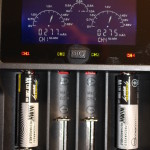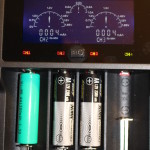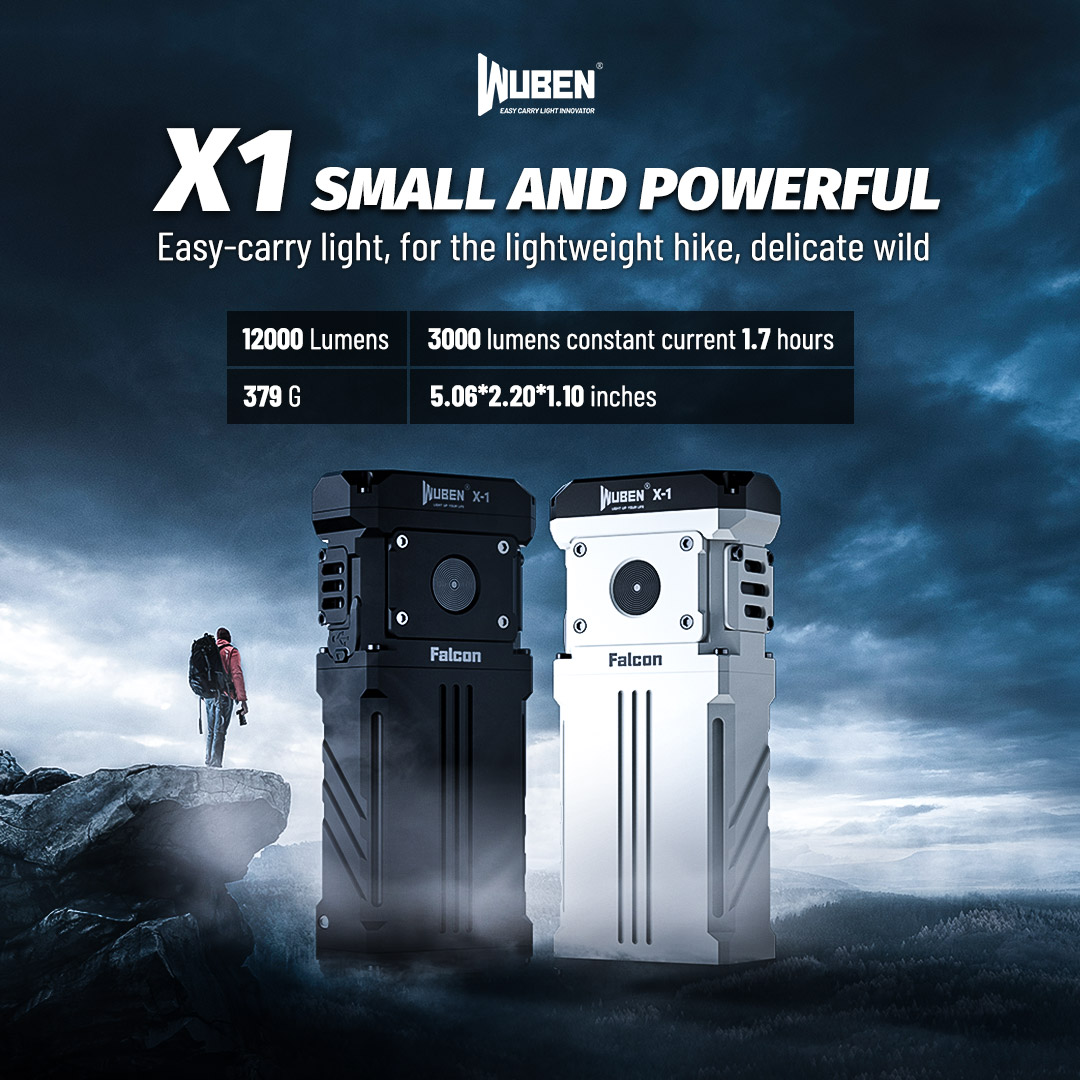XTAR caused quite a stir when they introduced the VC2 charger…which Lightsngear reviewed. Now, they’re hoping for an even bigger splash as the XTAR VC4 charger becomes more widely available.
A Well Endowed Package 
Here’s how the new VC4 arrives at your house. Within its retail ready informative box, is the charger itself, a large soft nylon bag with closure, a USB cable*, an instruction manual and warranty card. *So sorry the cable didn’t make it to the photo session!
What’s New!
Whereas the previous VC2 charges up to two Lithium-ion batteries, the VC4 takes the same precision, but goes a step…or two…further!
This time, up to four batteries can be both revived and charged. But, it handles more than just lithium this time. NiMH (Nickel Metal Hydride) batteries are now also welcome. In addition, they can be mixed around and charged simultaneously.
The Features You Need
Let’s take a look at a few of the characteristics that set the XTAR VC4 apart from other chargers on the market.
- Can charge twenty different sizes of batteries!
- Each channel operates independently
- Features a unique 0 (zero) volts activation functionality
- It will identify a bad or faulty battery prior to charging
- Features two charging currents; 0.5A and 1.0A
- A soft-start function eases the battery into the charging cycle
- Charges IMR batteries, as well as those with flat or button tops
- Slots one & four are slightly wider, to accept even the largest cell
- An intelligent circuit chooses the correct algorithm based upon battery type
- Features protections from overcharging, reverse polarity and short circuit
- The ability to charge when connected to ANY device with a USB port
Here’s How the VC4 Works
Place one to four rechargeable batteries in the spring-loaded slots. The charger will do a quick analysis, and the little dials will spring to action!
Just as the VC2 does, the well-lit dials on the VC4 immediately indicate what current the inserted battery will charge at. This is the smaller dial, top center, that shows either 0.5 or 1.0 amps.
The larger left and right dials, indicate the real-time status of the battery. “CH” below the dials shows which channel you’re looking at. The “CH” lights (1 through 4) beneath the display, are either red or green. Charging batteries are red, whereby charged batteries (and empty slots) are green. The grey button between them toggles the display between CH 1 & 4 and 2 & 3… depending on which slots are occupied.
Slots 1 & 4 will always deliver 1.0A to each battery. Slots 3 & 4 will always deliver 0.5A to each battery.
If a battery is charging in slot 1 or 4, BUT, there’s also a battery in slot 2 or 3, the LOWER amperage will dominate. This means that the cells in slot 1 and/or 4 will get 0.5A just the same as the cells in slots 2 and/or 3.
The display’s backlight can be switched off by pressing and holding the channel button. Another press restores it to full brightness.
When the Charge Completes
When a battery has completed charging, “FULL” will be displayed under the corresponding dial.
At this time, the voltage meter will read the maximum volts of the battery. BUT, in most cases the ACTUAL “resting” voltage of the battery, will be less. This is my recommendation; check the voltage with a volt (multi) meter to know the exact status of the battery. This can also be important if you’ve just charged two batteries that are often used in series…such as 16340’s. Ideally, they should match when placing them in a working device. If for some reason, one of them finished up to one volt lower than the other, a final check will verify that.
Seeing is Believing
The photos below demonstrate different battery configurations, as well as battery chemistry. The charging dials each reflect those differences. Click on an image to view it FULL SIZE.
Weighing the Value
In my opinion you’ll be very pleased with the XTAR VC4. It’s a very versatile charger with several excellent features. It’s what the charger does on the inside for which the user has no control…in areas such as battery safety, that are important.
It’s well worth what you’ll pay for it, and should provide long-lasting service.
If you’d like to consider a purchase, and/or read what other users have to say, click here!
The XTAR VC4 Lithium/NiMH charger was provided for review by XTAR.












There are lots of cheap battery chargers available, but if I can offer a suggestion – if you are thinking of buying one – spend the money and buy quality. I have made the mistake of buying cheap chargers and they don’t really work out cheap in the long term. I’ve had perfectly good batteries ruined by poor chargers and I have long since consigned them to the bin along with the chargers.
The VC4 does look like a worthwhile investment especially for anyone who demands a reliable response from their batteries and equipment.
Thanks for your insightful comment Eoin! And I’m being 100% humble while saying you’re absolutely correct! XTAR really DOES make a quality product, and the relative small investment is very well spent.
Being this charger doesn’t come with a wall charger what amprege USB charger would be best for charging all types of batterys this charger handles
Hello Terrance,
I usually use (and recommend) those that are 5v — 1 amp. It works well under those conditions.
I’ve bought a VC4 charger, and have a question… unfortunately the User Guide is useless for almost any question beyond the blindingly obvious!
If I place batteries in the charger with, say, half their total charge capacity still on board, does the mAh value displayed on the screen at the end of charging indicate how much charge was added to the battery, or the final capacity of the battery?
If it’s the final capacity then there seem to be way too many NiMH batteries out there (including big brands like Eneloop) which simply don’t come anywhere near there claimed capacity.
Hi Andrew,
The charger can’t read existing capacity, so displayed mAh is ALWAYS what the battery has accepted since the charge began. Approximate TOTAL capacity can only be measured if the battery is drained.
Hope this helped!
Thanks.